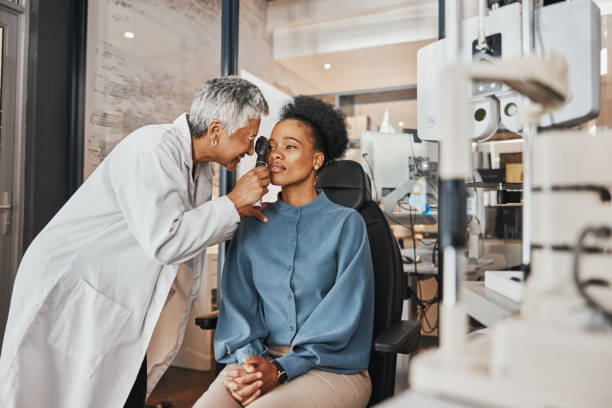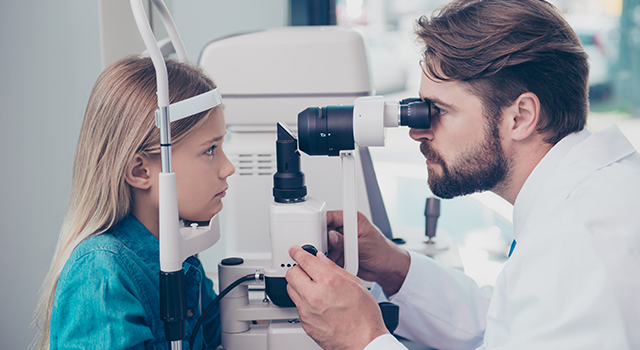Compassionate Eye Doctor: Specialist Care for Riverside Citizens
Compassionate Eye Doctor: Specialist Care for Riverside Citizens
Blog Article
The Comprehensive Eye Exam: What to Expect During Your Visit to the Eye Doctor
A visit to the eye medical professional for a thorough eye exam is even more than a routine exam; it is an important step in guarding your visual health. What exactly takes place during the eye wellness evaluation, and how does it affect the prescription process?
First Assessment
The preliminary assessment throughout an eye exam functions as an important structure for comprehending a person's aesthetic health and wellness needs. This stage establishes the tone for the entire examination procedure, allowing the optometrist to gather important details regarding the individual's case history, way of life, and specific vision concerns. By meticulously examining any pre-existing conditions, drugs, or previous surgical procedures, the eye care expert can tailor the examination to deal with private needs successfully.

In addition, the first assessment is a chance for people to articulate any concerns or issues, promoting a collective partnership with their doctor. This interaction not only makes sure that the client feels educated and comfortable but also empowers them to get involved proactively in their eye health and wellness administration. Collectively, these discussions enable the optometrist to design a personalized assessment strategy, guaranteeing optimal treatment and specific medical diagnosis.
Visual Acuity Examination
Beginning the core components of an eye assessment, the visual acuity test is created to analyze the sharpness and quality of an individual's vision. This vital examination assists establish how well an individual can discern letters or icons at a standardized range, typically making use of a Snellen chart (Eye Doctor Optometrist). The chart consists of rows of letters that reduce in size from leading to base, with the client placed at a popular distance of 20 feet
During the test, the individual is asked to cover one eye and read out loud the tiniest line of letters they can see plainly. This process is repeated for the various other eye. The results are taped as a portion, with 20/20 vision showing regular visual skill-- where the person can see at 20 feet what an individual with normal vision can see at that distance.
The visual skill examination also determines prospective refractive mistakes such as astigmatism, nearsightedness, or hyperopia, which might necessitate restorative lenses. By developing a baseline of aesthetic efficiency, the examination is an important diagnostic device that helps the eye care specialist in establishing a suitable treatment plan tailored to the patient's one-of-a-kind aesthetic needs.
Eye Health And Wellness Evaluation
Complying with the aesthetic skill test, a detailed eye wellness assessment is conducted to make certain the overall health of the eyes. This crucial section of the eye examination entails a comprehensive evaluation of both the external and interior frameworks of the eye. The ophthalmologist or eye doctor begins by analyzing the eyelids, cornea, conjunctiva, and sclera for any kind of indications of infection, inflammation, or abnormalities. Using customized equipment like a slit light, the professional gets a multiplied sight of the eye's makeup, allowing detailed examination.
Through the use of ophthalmoscopy or fundus digital photography, find the retina, optic nerve, and blood vessels are carefully reviewed. In lots of situations, student expansion is performed to improve presence of the internal eye structures, although this may result in short-term light level of sensitivity for the person.
In addition, intraocular stress is measured to screen for glaucoma risk. This is commonly done making use of tonometry, which can detect raised stress levels that could suggest prospective damages to the optic nerve. Jointly, these analyses develop a comprehensive analysis to maintain ocular health and wellness.
Refraction and Prescription
Refraction is a sophisticated treatment performed by eye care experts to identify the exact lens power needed to correct refractive errors such as myopia, presbyopia, astigmatism, and hyperopia. The goal of this procedure is to analyze exactly how light bends as it passes via the eye, permitting the expert to figure out whether corrective lenses are necessary for improved aesthetic acuity.
Throughout the refraction process, the person is asked to check out a phoropter, a tool which contains various lenses. The specialist will systematically transform these lenses and ask the individual to see this compare quality in between choices till the most effective possible vision is accomplished. This treatment is important in crafting an accurate prescription that specifies the appropriate lens power for spectacles or get in touch with lenses.
The prescription acquired from this procedure not only enhances vision yet also offers as a structure for choosing appropriate rehabilitative eyewear. It is necessary to guarantee that prescriptions are routinely updated, as modifications in vision can occur in time, emphasizing the importance of routine eye evaluations. This careful focus to information helps preserve clear, comfy vision in life.
Follow-Up Recommendations

Throughout a follow-up visit, the eye medical professional will certainly carry out a series of examinations to assess visual acuity and look for any type of modifications in vision that could require an upgrade read the full info here to the prescription. Furthermore, the follow-up gives an opportunity to discuss any discomfort or issues experienced with present eyewear. Adjustments can be made to ensure convenience and efficacy, whether through lens modification or structure modifications.
For patients with continuous conditions such as glaucoma, diabetes-related eye problems, or macular deterioration, even more frequent follow-ups might be essential. These visits are vital for handling and possibly slowing down the development of eye condition. Complying with these recommendations can significantly add to keeping visual wellness and stopping lasting problems.
Conclusion
The comprehensive eye examination is an important procedure for keeping aesthetic wellness, including a thorough assessment of medical background and vision issues. Trick components consist of the aesthetic acuity examination, which assesses sight clarity, and the eye wellness assessment, which checks out the overall condition of the eyes. Refraction tests aid figure out the exact lens prescription necessary for optimum vision adjustment. Follow-up recommendations supply assistance for ongoing eye care, making sure that any type of possible concerns are resolved quickly and successfully.
A check out to the eye physician for an extensive eye test is even more than a routine check-up; it is an important action in safeguarding your aesthetic wellness.Kicking off the core parts of an eye exam, the visual acuity examination is made to examine the sharpness and quality of a patient's vision.Following the aesthetic skill test, a detailed eye health and wellness evaluation is conducted to guarantee the total health of the eyes. These gos to allow the eye care expert to check modifications in vision, upgrade prescriptions, and evaluate the overall wellness of the eyes. Key components consist of the aesthetic acuity test, which reviews sight clearness, and the eye health evaluation, which checks out the overall condition of the eyes.
Report this page